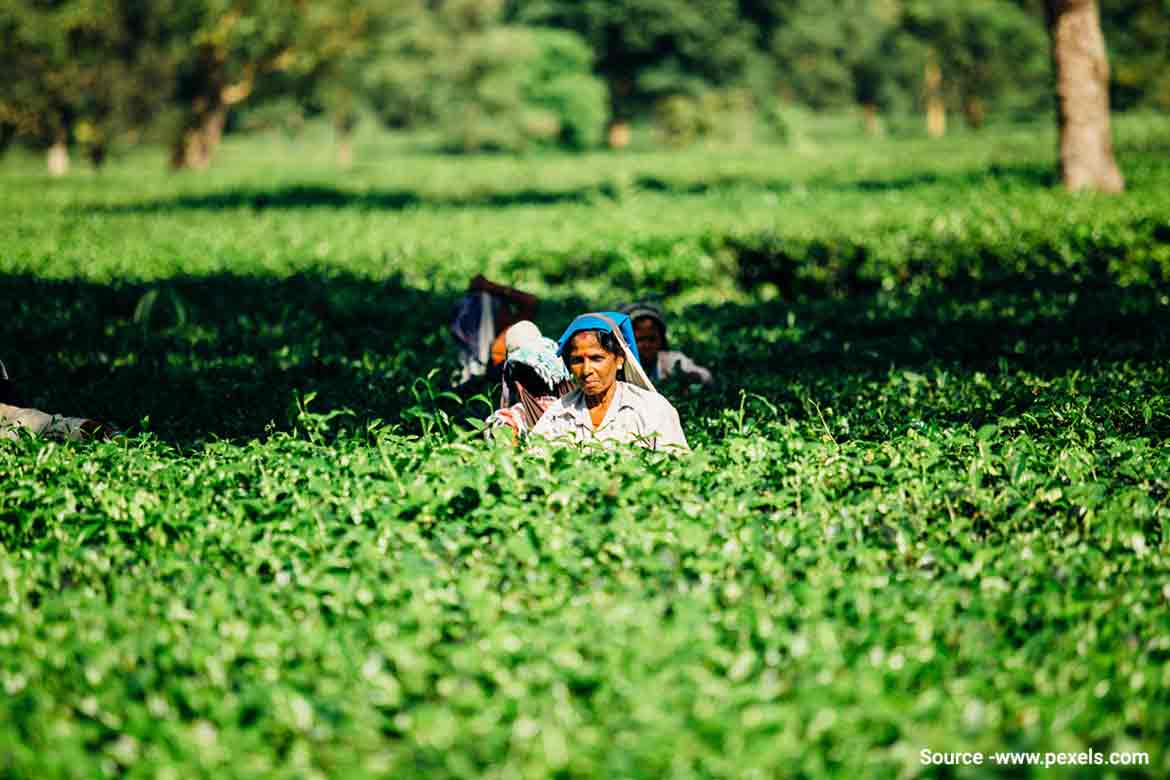The striking feature of Indian climate is the south-west monsoon as it is very significant for Indian agrarian system. Therefore, the long-term trends of the south-west monsoon is directly associated with economic security of India.
A recent study by IMD on monsoon variability over a 30-year period between 1989 and 2018has revealed that Uttar Pradesh, Bihar and West Bengal are three of the 5 states that have shown significant changes in the southwest monsoon. These states have a great impact on the agricultural production of India.
About 55% of India’s agricultural land is dependent on rainfall. The amount of rainfall during the monsoon season can affect economic activities related to the agriculture sector and allied industries. A deviation in monsoon can have serious repercussions for Indian economy, food security and public interest.
What is monsoon?
It is worth noting that this word is derived from the Arabic word Mausim, which means the mood of the winds. In winter, the winds blow from north-east to south-west direction, which is called winter monsoon.
On the other hand, in the summer season the winds blow in the opposite direction, which is called the south-west monsoon or summer monsoon. Since these winds helped merchants in sailing in ancient and medieval times, they are also called trade winds.
Pattern of Monsoon in India:
The climate of India is described as ‘monsoon’ type. This type of climate is found mainly in the south and southeast Asia.
The rainfall received from the South-West monsoon is seasonal, occurring between June and September. The months of October and November are known for the withdrawal of monsoon.

Also read: Water Intensive Agriculture Is ‘Elephant In The Room’
Indispensable for India’s agriculture:
The south-west monsoon plays an important role in India’s agriculture and affects the livelihood of millions. About 80 percent of the annual rainfall in India occurs during the summer period and water is supplied to crops through irrigation during the major agricultural season.
During the south-west monsoon, cultivation of monsoon friendly crops with high water requirement like sugarcane, jute and paddy can be done easily.
The agricultural sector in India hold great economical significance. This sector accounts for about 14% of the country’s economy and gives 42% of the total employment.
Also about one-third of India’s manufacturing output; Which is about 18% of the country’s GDP, is linked to food processing. Therefore, too much rainfall or too little or unstable monsoon pattern can damage crops and ultimately Indian economy.
Repercussions of a bad Monsoon:
India has a little over 50% of its total cropped area under rainfall and a large part of the irrigated area depends on irrigation through borewells, which need to be recharged with groundwater.In case of bad monsoon, these ground water sources are not recharged adequately which can lead to water crisis.
To corroborate this, a report published by NITI Aayog had predicted zero groundwater potential in around 21 Indian cities (including New Delhi, Hyderabad and Chennai) by the year 2020.
Secondly, the government may need to actively bolster farmers during crop faliures. Most likely, this may prompt the government to raise the minimum support price for all crops of the current season to support the income of farmers. This leads to a huge fiscal burden on the government.
Thirdly, Water obtained from monsoon rains can be used as hydroelectricity, a valuable energy resource. Hydropower currently provides 25% of India’s total electricity supply. The reservoirs are filled during the south-west monsoon rains and then this water is slowly released through dams, which generate electricity throughout the year. During a bad Monsoon, reservoirs do not store enough water, limiting the amount of hydroelectric power produced by the water.
Besides, normal monsoon rains keep food inflation under check due to sufficient supply of food products. However, in the event of drought, the prices of food products increase significantly. In addition, the country may also need to import food grains if poor monsoon results in low crop production.
Need of the hour:
Availability of water is a national challenge. We have 18% of the world’s population and only 4% of freshwater resources. Thus, the Government of India needs to give high priority to huge investments in better water storage systems for the agriculture sector.
More crop per drop approach would be worthwhile to give high priority to rainwater harvesting, water recharge, rejuvenation of water bodies and conservation technologies.
Moreover, water usage patterns in India are extremely inefficient. Here Indian farmers use two to four times more water to produce one unit of any major food crop. Thus Indian agriculture needs to rapidly adopt new and less water-intensive technologies. For this, there is a need to double the efforts to encourage the use of micro-irrigation measures such as schemes being run by the Government of India. These schemes encourage the use of water more efficiently.
